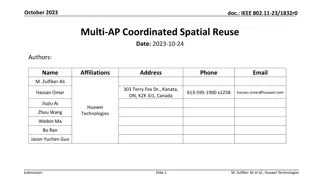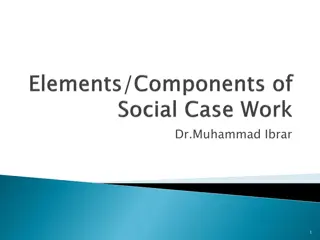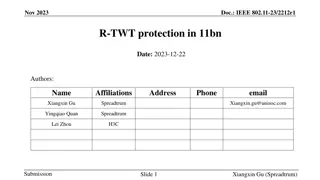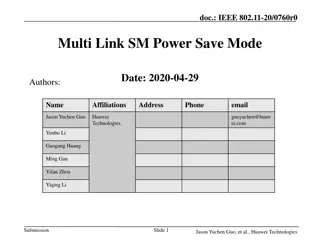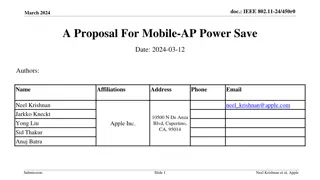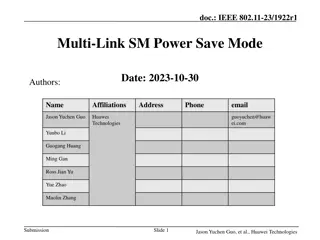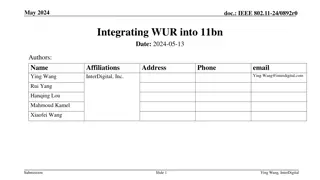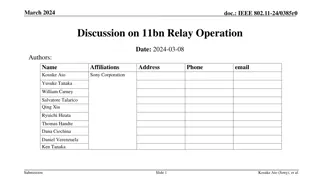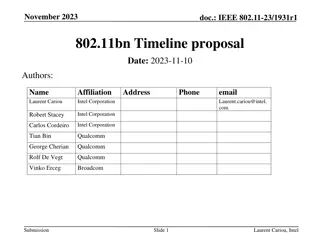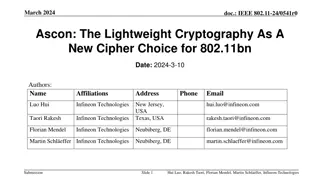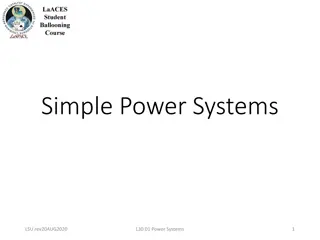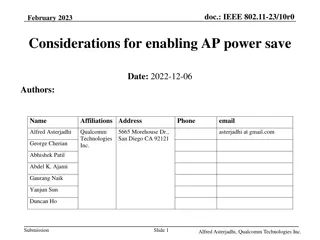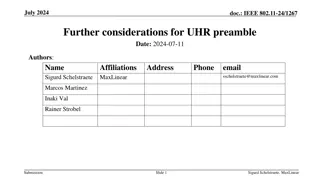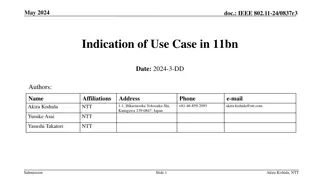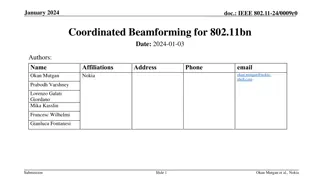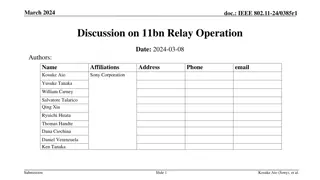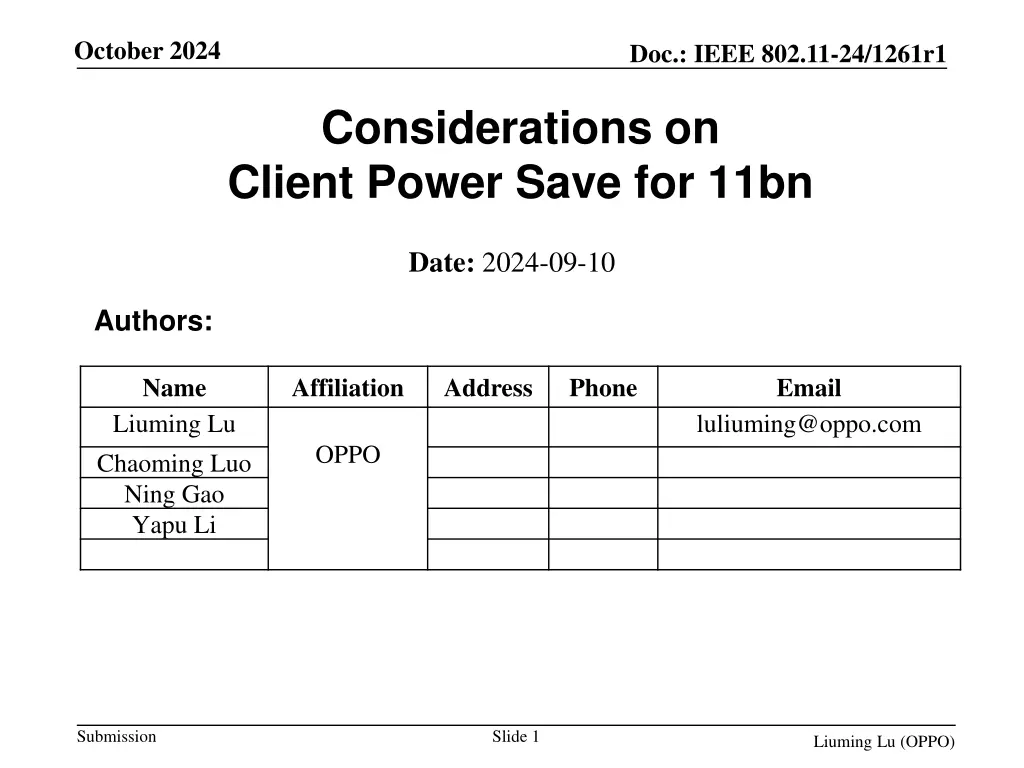
Flexible Management of Client Power Save Mode in Client-AP Communication
Explore the mechanism for flexible management of Dynamic Power Save (DPS) mode in non-AP client devices in communication with DPS-capable APs. Learn about enabling and disabling DPS mode, frame exchanges, and parameter updates within the DPS operation framework.
Download Presentation

Please find below an Image/Link to download the presentation.
The content on the website is provided AS IS for your information and personal use only. It may not be sold, licensed, or shared on other websites without obtaining consent from the author. If you encounter any issues during the download, it is possible that the publisher has removed the file from their server.
You are allowed to download the files provided on this website for personal or commercial use, subject to the condition that they are used lawfully. All files are the property of their respective owners.
The content on the website is provided AS IS for your information and personal use only. It may not be sold, licensed, or shared on other websites without obtaining consent from the author.
E N D
Presentation Transcript
October 2024 Doc.: IEEE 802.11-24/1261r1 Considerations on Client Power Save for 11bn Date: 2024-09-10 Authors: Name Liuming Lu Chaoming Luo Ning Gao Yapu Li Affiliation Address Phone Email luliuming@oppo.com OPPO Submission Slide 1 Liuming Lu (OPPO)
October 2024 Doc.: IEEE 802.11-24/1261r1 Introduction Power save is very important especially for client devices such as mobile phones. Currently 802.11bn task group has agreed to define Dynamic Power Save DPS mode. the STA that uses DPS mode may transition from a lower capability (LC) mode to a higher capability (HC) mode upon reception of an initial control frame Lower capability mode (e.g., 20 MHz BW, one SS, limited data rates, PPDU format) Higher capability mode (e.g., operating BW, NSS and MCSs, with at least one higher capability than that in the lower power capability mode) Initial Control frame is TBD Whether that applies for a non-mobile AP is TBD The DPS mode would cause extra ICF/ICR exchanges, and the benefits from DPS mode for the non-AP STAs that uses this mode depends on The environments where the STA is located, such as dense or non-dense environments the requirements of the traffic to be delivered for the STAs the TX/RX parameters in lower capability (LC) mode the TX/RX parameters in higher capability (HC) mode the transition mode from LC mode to HC mode, such as whether the STAs always need to transition from a LC mode to a HC mode upon reception of an initial control frame This contribution proposes a mechanism for the flexible management of DPS mode. Submission Slide 2 Liuming Lu (OPPO)
October 2024 Doc.: IEEE 802.11-24/1261r1 DPS as a mode of operation DPS-capable non-AP STAs can enable or disable the DPS mode when it is associated with the DPS-capable AP Enabling DPS mode: An DPS-capable non-AP STA can enable dynamically DPS mode by notifying the DPS-capable AP or by negotiating with the DPS-capable AP. DPS operation parameters, such as DPS mode indication enabling DPS mode , DPS padding delay, DPS switch back delay, optional operating parameters for the lower capability mode and higher capability mode and optional transition mode are carried in the DPS mode management frames (such as DPS mode notification frames). Frame exchanges in DPS mode: The DPS-capable non-AP STA operates in its lower capability mode when no DPS initial control frame (ICF) addressed to it is received The DPS-capable non-AP STA transitions from a lower capability (LC) mode to a higher capability (HC) mode upon reception of an initial control frame and do frame exchanges in a higher capability mode if the transition is required. Updating parameter(s) in DPS mode. An DPS-capable non-AP STA in DPS mode can update dynamically DPS parameters by sending a DPS mode notification frame with DPS mode indication (enabling DPS mode) and DPS parameters to be updated to the DPS-capable AP. AP optionally responds to the DPS mode notification frame. Submission Slide 3 Liuming Lu (OPPO)
October 2024 Doc.: IEEE 802.11-24/1261r1 DPS as a mode of operation (Cont.) DPS-capable non-AP STAs can enable or disable the DPS mode when it is associated with the DPS-capable AP Disabling DPS mode: An DPS-capable non-AP STA can disable dynamically DPS mode by notifying the DPS-capable AP or by negotiating with the DPS-capable AP. DPS mode indication disabling DPS mode is carried in the DPS mode exchange frames (such as DPS mode notification frame). AP optionally responds to the DPS mode notification frame sent by the STA. Behavior of the DPS-capable non-AP STA when disabling DPS mode: the STA always operate in its full capability mode when the STA stays in the active mode. Submission Slide 4 Liuming Lu (OPPO)
October 2024 Doc.: IEEE 802.11-24/1261r1 Summary The benefit from DPS mode depends on the environments where the STA is located, the requirements of the traffic to be delivered for the STAs, the TX/RX parameters in lower capability (LC) mode and/or higher capability (HC) mode, and the transition mode from LC mode to HC mode. The flexible management of DPS mode is suggested to be considered: Enabling/disabling the DPS mode updating the operating parameters in DPS mode, the operating parameters to be indicated for DPS mode may include: DPS padding delay DPS switch back delay optional operating parameters in the lower capability mode optional operating parameters in higher capability mode optional transition mode. Submission Slide 5 Liuming Lu (OPPO)
October 2024 Doc.: IEEE 802.11-24/1261r1 References [1] UHR proposed PAR, https://mentor.ieee.org/802.11/dcn/23/11-23-0480-01- 0uhr-uhr-proposed-par.pdf [2] Power Save Protocols for UHR - follow up, https://mentor.ieee.org/802.11/dcn/24/11-24-0544-01-00bn-power-save- protocols-for-uhr-follow-up.pptx [3] Client power save, https://mentor.ieee.org/802.11/dcn/23/11-23-2003-00- 00bn-client-power-save.pptx Submission Slide 6 Liuming Lu (OPPO)
October 2024 Doc.: IEEE 802.11-24/1261r1 SP SP : Do you support to specify a mechanism for enabling or disabling Dynamic Power Save DPS mode in UHR? The mechanism is TBD. Submission Slide 7 Liuming Lu (OPPO)

